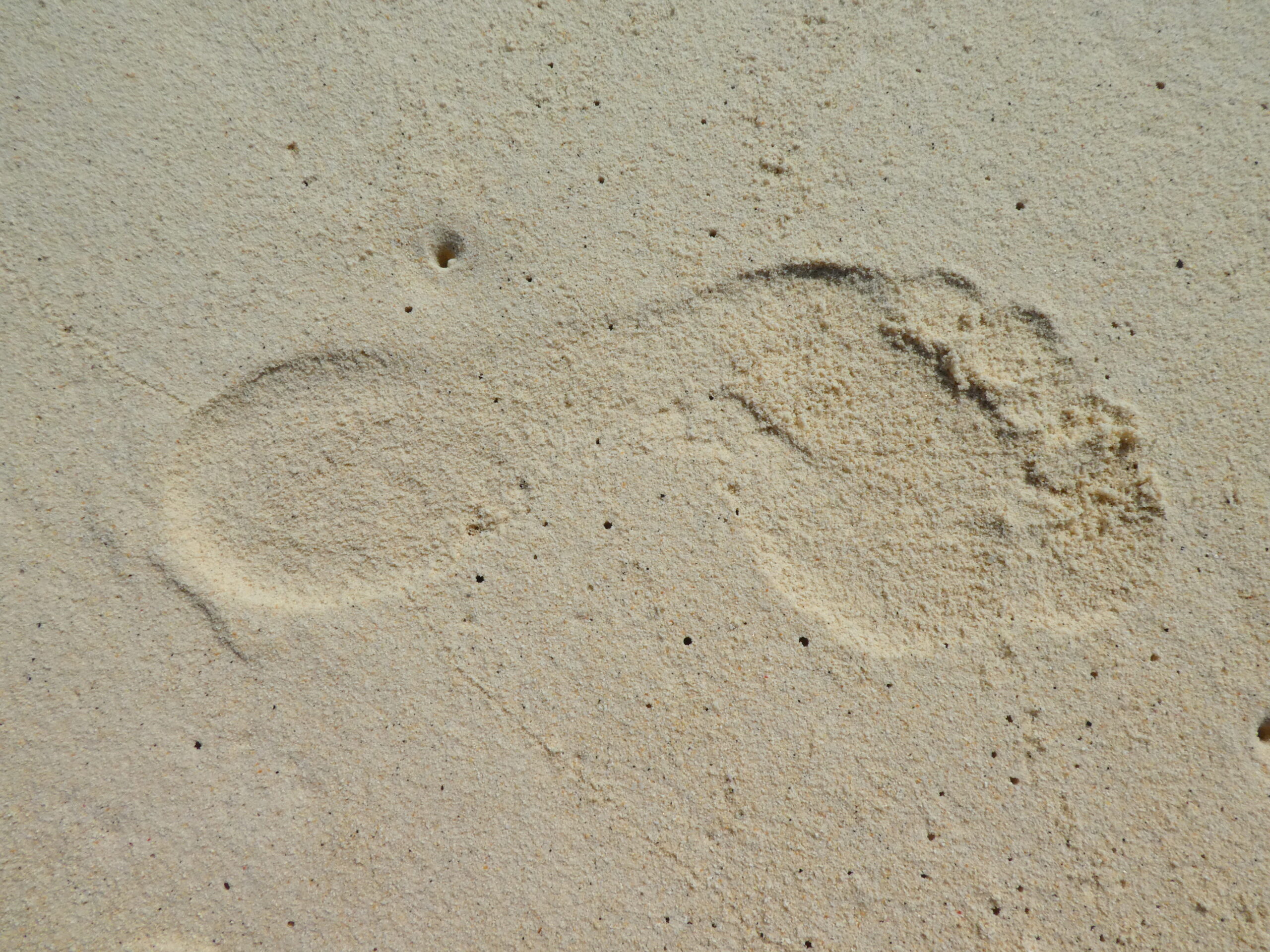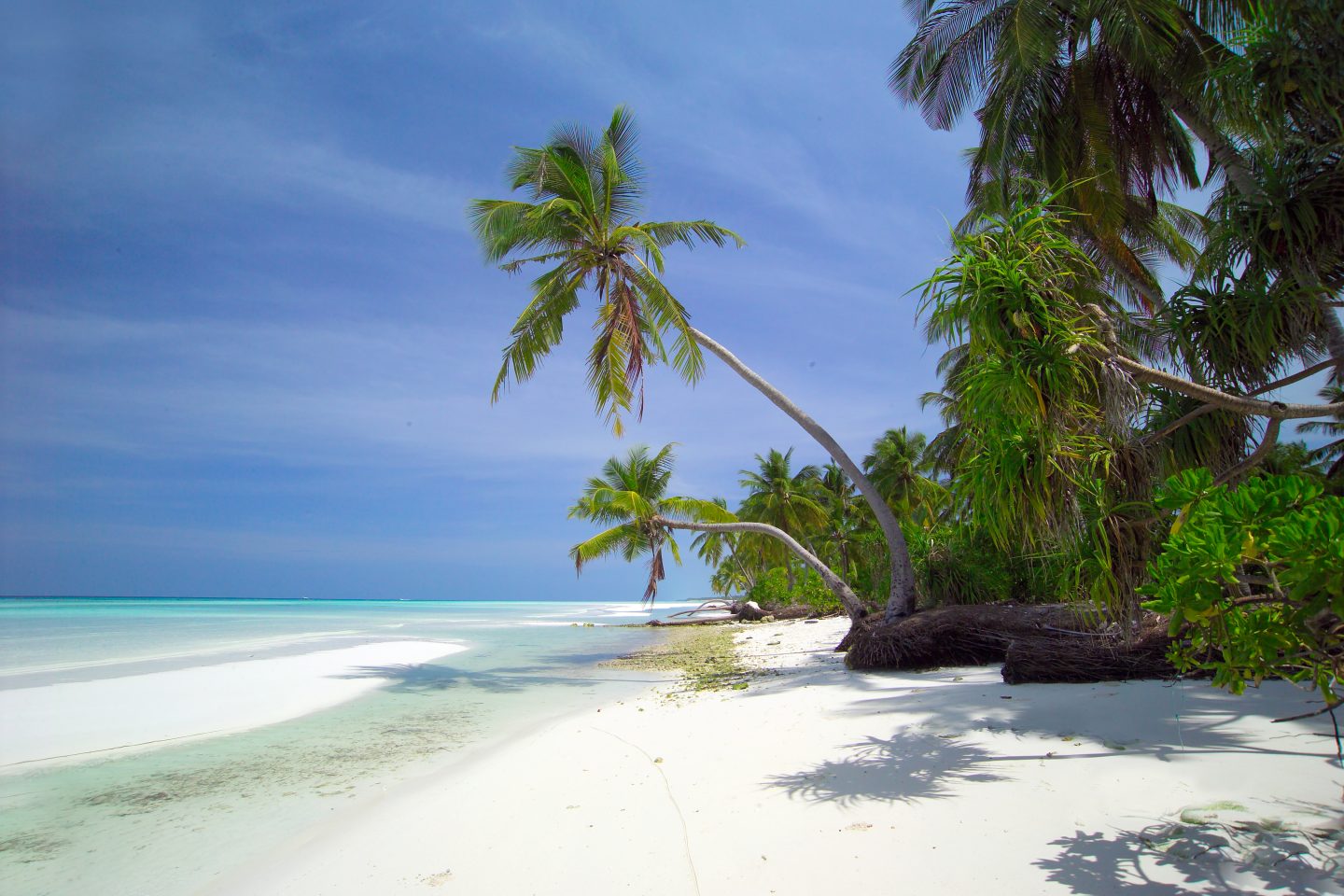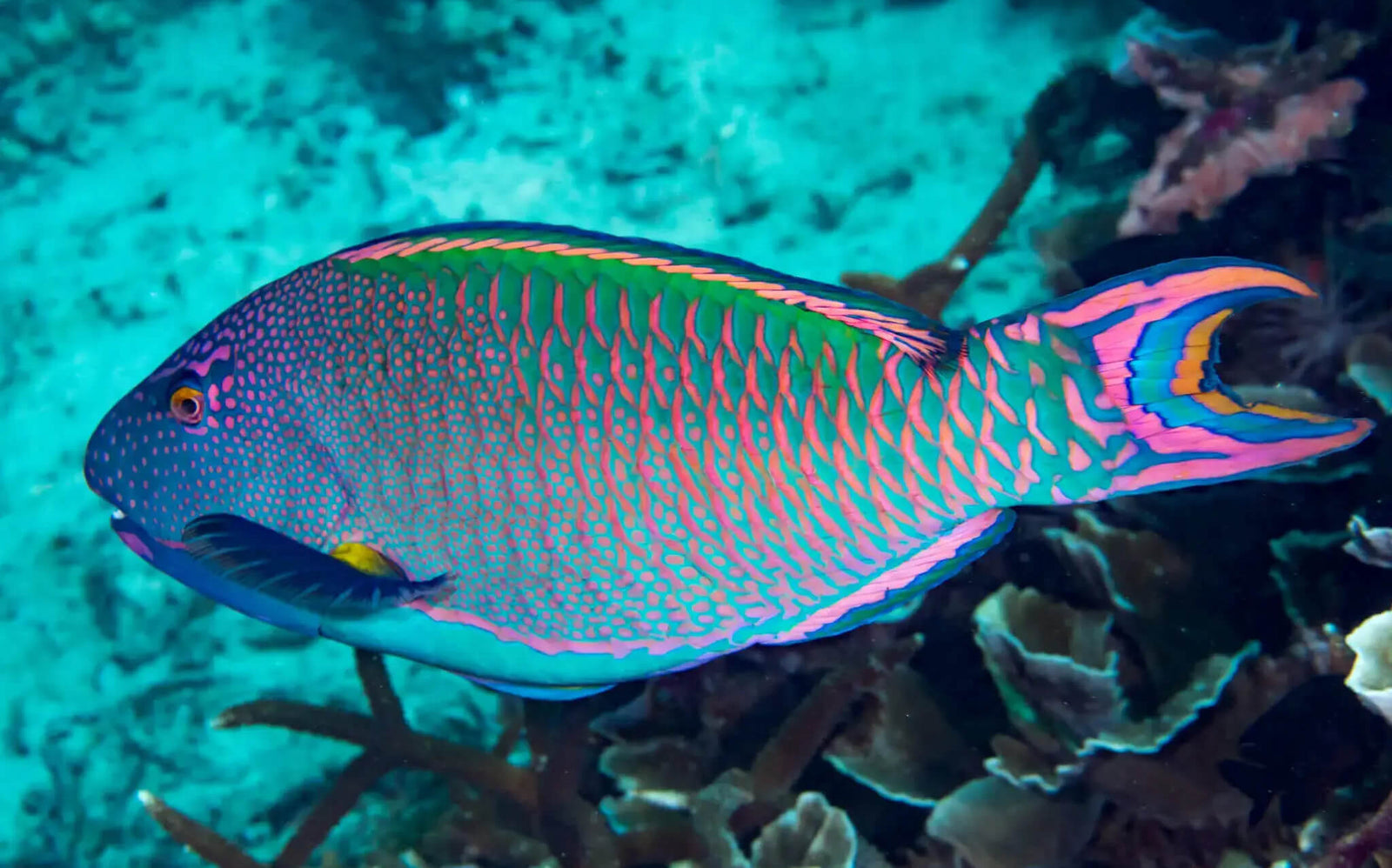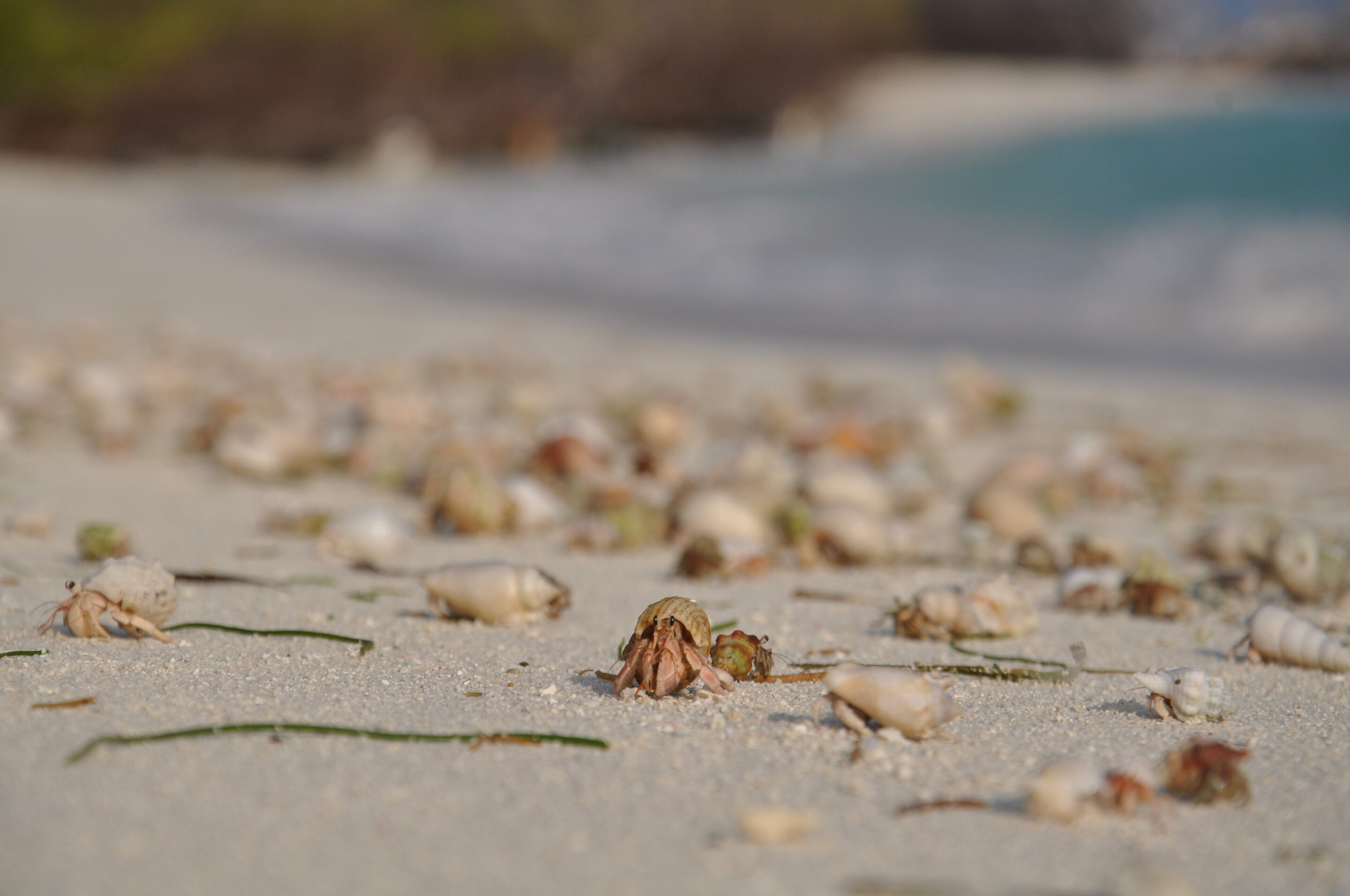MALDIVES BEACHES – 5 FUN FACTS

Everyone knows that the Maldives is famous for picture perfect white sand beaches. What most people don’t realise though, as they relax on their sun lounger, is that there is more to our beaches than first meets the eye!
These 5 fun facts may just surprise you!
- Maldives beaches never get hot!

Unlike ordinary quartz based sand, sand formed from coral does not heat up on the maldives islands and therefore is comfortable to walk on even on the hottest day.
2. Maldives beaches are always on the move!

3. Maldives beaches are created by parrot fish!

A large proportion of the coral grains that form our beaches is undigested coral that has been disgorged by the colourful parrot fish. The parrot fish spends most of it’s time eating seaweed and polyps from the surface of the coral. But due to its sharp beaked mouth it also takes chunks of hard coral which it then breaks up with the teeth in its throat and disposes of.
4. Maldives beaches are cleaned by crabs!

Crabs in all shapes and sizes come out at night. Many, like the ghost crab, live on the beach burrowing holes in the sand. These are the crabs that you will see scuttling away if you take a late night stroll. This army of crustaceans eat small particles of food and waste and assist in keeping the beach clean.
5. The Maldives has a unique shiny beach!
The sands of Thundi in Fuvahmulah are famous not only in the Maldives but to the world. The shiny pebbles and shells in whites, browns, pinks and purples stretch to form the largest beach in the country. Voted by Wanderlust as the 9th Secret beach in Asia, maybe you need to come and see for yourself!
It is important to note that the allure of these white-sand shores and crystal-clear waters is best enjoyed with a mindful approach that considers the delicate ecosystems at play. Sustainable tourism is crucial in preserving the natural beauty of the Maldives, ensuring that future generations can revel in its splendor. Engaging in responsible travel involves acknowledging the interconnectedness of personal actions and the environment. By recognizing this vital link, travelers can appreciate the significance of minimizing their ecological footprint.
Isn’t it time you got the sand between your toes?
